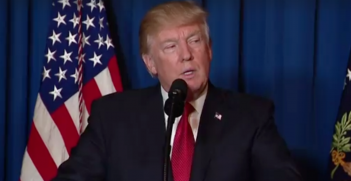The No-surprises Defence Budget

Just as knowing what Santa is going to bring you takes some of the fun out of Christmas morning, this year’s Federal Budget was pretty unexciting from a defence perspective. With one small wrinkle, the government did exactly as promised in the White Paper. As a result, the goal of spending 2% of GDP in 2020-21 remains within reach.
Defence funding will amount to $32.4 billion next financial year—about the same as this year in real terms, but the GDP share will fall from 1.94% to 1.88% of GDP because the economy will continue to grow. As a share of federal government payments, defence spending will fall from 7.5% to 7.3%. The lack of growth next year is a consequence of two factors. First, the growth path to 2% of GDP in the White Paper was always planned to commence slowly. Second—and here’s the wrinkle—$500 million of funding planned for next year has been slipped to the year after. In what’s the budget papers call a ‘Defence Budget Rephasing’, the money has been deferred to better align funding with expenditure. There’s nothing wrong with that. In the years ahead we should expect similar movements of money—forward and backwards—as the demands of the multi-billion dollar investment program evolve.
Of course, there’s always the danger that this year’s deferral will be the first of many. Back in the 2000s, hundreds of millions of dollars of planned investment was deferred because Defence simply could not spend the money (in part because industry failed to deliver capability). With rapid investment growth planned towards the end of this decade, and Defence’s processes and structure in flux due to the First Principles Review, there’s a risk that history will repeat itself—especially towards the end of the decade when funding ramp-ups in earnest. It won’t help that much of the money will be spent in-country on bespoke projects, rather than on less risky off-the-shelf purchases. But, when all is said and done, there’re worse positions to be in. The priority should be to build up the ADF to meet the challenges ahead, not to set budget targets that are easy to meet.
This year’s Budget saw the usual supplementation for operations; $758 million for next year, compared with $911 million last year. There were also a few small adjustments for foreign exchange movements. The largest non-operational measure was the transfer of $122 million over four years from Defence to other agencies as part of the implementation of the government’s cyber security strategy.
One of the disappointments in this year’s Budget was the failure to provide visibility of funding over the decade. The White Paper provided explicit funding guidance out to 2025-26, but the Budget Papers only provide numbers out four years, i.e. to 2019-20. A regular update of guidance, or at least the changes to guidance, over the decade (as was routine in Budgets from 2003-4 to 2012-13) would provide a strong assurance that the government remained committed to the funding envelope in the white paper.
Budgets, especially pre-election Budgets, are as much about selling a narrative as they are about the cold hard numbers. In the past, we’ve seen Budgets in which defence and national security were central to the story. This year, defence rated a mention in both the glossy budget overview and the Treasurer’s speech, but the unambiguous emphasis was on jobs, especially shipbuilding jobs. Indeed, far from a khaki budget, we’ve been treated to a flouro-vest budget where jobs are the main focus—at least in terms of the pitch.
Where does that leave us? Unlike the disappointment of 2009, when $8.8 billion was cut from defence in the budget, the government has made a credible but unspectacular start (there’s only so much credit you give them when spending has effectively stayed where it was). But even given the bipartisan commitment to deliver the funding promised in the 2016 Defence White Paper, there are hurdles ahead. Future governments will have to deal with the political and economic opportunity cost imposed by growing defence spending. It doesn’t bode well that the year when defence spending is slated to reach the 2% of GDP (2020-21) is the same year that the government now expects a return to surplus. If economic conditions falter, and the choice becomes between delivering a surplus and making good on promised defence spending, the precedent of 2009 provides no solace.
Mark Thomson is a senior analyst at the Australian Strategic Policy Institute (ASPI). This article originally appeared on ASPI’s The Strategist on 3 May. It is republished with permission.





